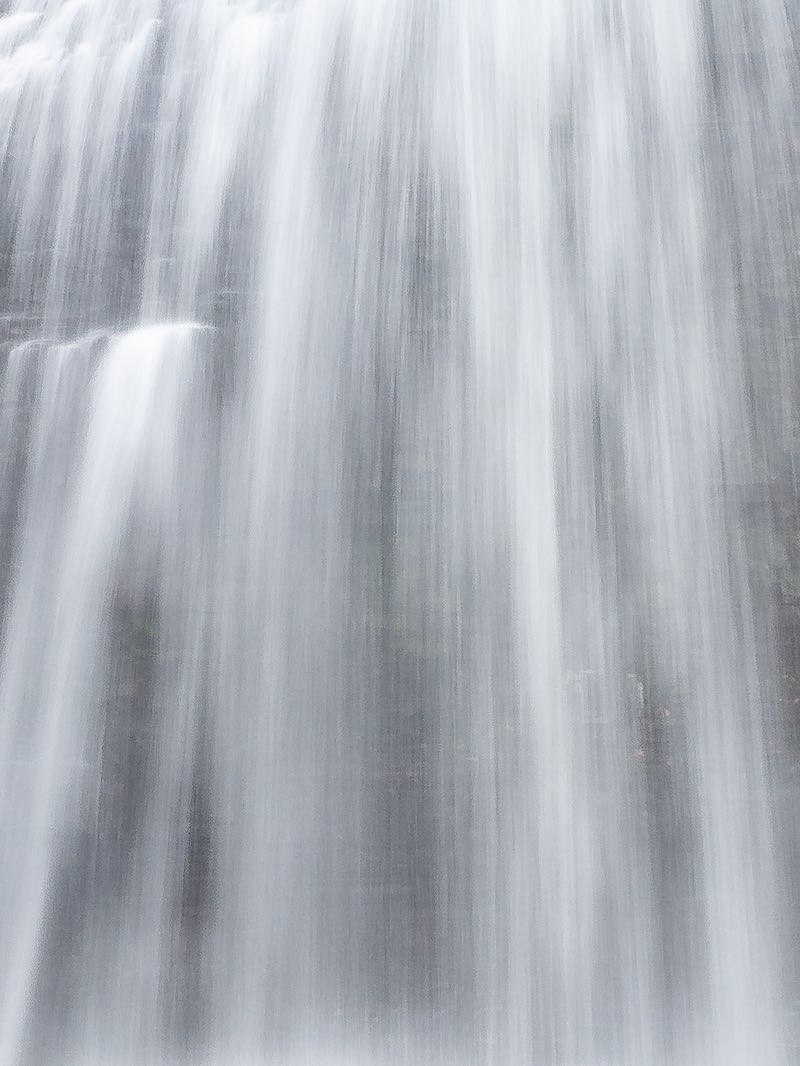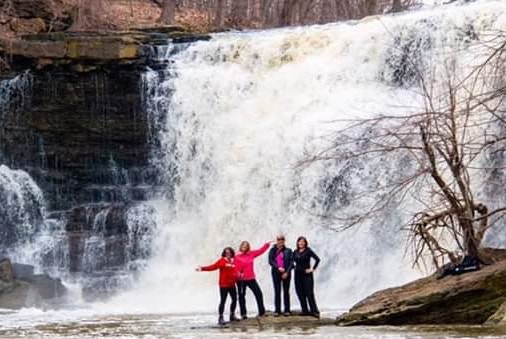






Like with the Caprock Plunge waterfall, Step waterfalls form where the rock is found in horizontal layers. In this case, however, no single rock layer is stronger than the rest.
The lack of a resistant caprock prevents the formation of a vertical falls. This is because there is no caprock to be undercut by erosion of soft rocks underneath.
Step waterfalls vary in appearance and steepness. They generally look like a giant staircase, but sometimes there is just one step! There may be some portions that appear to be plunge waterfalls, but they are not dominant.

Step Waterfalls are more common in Eastern Ontario. These areas lack the thick exposures of soft shale that are generally needed to create a caprock plunge. There are also step waterfalls in northern Ontario where metamorphic rocks are flat-lying.
The Step waterfall type grades into both Washboard waterfalls and Block Waterfalls. All three of these waterfalls are similar; they form on flat-lying rocks but do not have a strong caprock contrasting with a weaker rock below.
Washboard and Step waterfalls are most alike, but I've kept them separate for now to try to point out the subtle differences



Join our Facebook community to share tips, photos and updates. Operating since 2011, this well-moderated, respectful, and informative group is the hub of Ontario's waterfalling community. (Photo by Martin Van Opstal)
